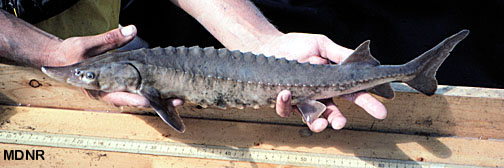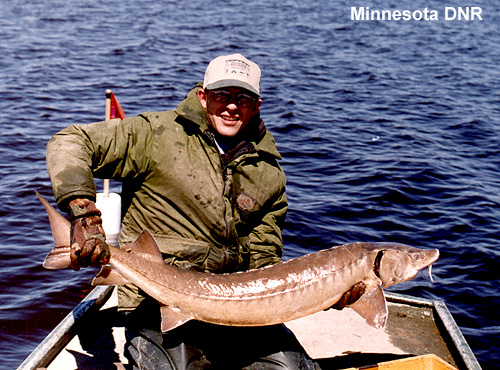On July 10, 1817, Rafinesque read a paper before the Literary and Philosophical Society of New York. Under the title "Addition to the Observations on the Sturgeons of North America," he "gave it as his opinion that the lake sturgeon is a perfectly distinct species, to which the name of accipenser fulvescens could be given, as it is entirely of a dark fulvus colour." (Acipenser is Latin for sturgeon; this word and fulvous [meaning yellowish-brown] are misspelled in the description of Rafinesque's paper, quoted from The American Monthly Magazine and Critical Review, vol. 1, August, 1817, page 288.)



